Welcome to my favorite comfort food recipe. This Sinigang na Tilapia with Gabi is a dish I've perfected over years of cooking for my family. The tangy tamarind broth, tender fish, and creamy taro root come together in just 45 minutes to create a bowl of pure Filipino comfort.
When I first tried making this traditional sour soup, I was amazed at how such simple ingredients could create such complex flavors. The sour broth warms you from the inside out while the vegetables and fish make it a complete meal in one pot.
What is Sinigang na Tilapia with Gabi?
Sinigang na Tilapia with Gabi is a traditional Filipino sour soup that combines fresh tilapia fish with taro root (gabi) and various vegetables in a tangy tamarind broth. This hearty dish is a staple in Filipino households, especially during rainy days or when seeking comfort food. The gabi adds a wonderful creamy texture that complements the tender fish and sour broth perfectly.
Jump to:
Why You'll Love This Recipe
This Sinigang na Tilapia with Gabi is a soul-warming Filipino sour soup that's both comforting and nourishing. The perfectly tender tilapia fillets swim in a tangy tamarind broth alongside creamy taro (gabi) and fresh vegetables.
This recipe strikes the perfect balance between simplicity and flavor, making it an ideal weeknight dinner that still feels special. The rich, tangy broth clears the sinuses and warms you from the inside out, while the combination of protein and vegetables makes for a complete one-pot meal.
Ingredients
I've carefully selected each ingredient in this recipe to create the perfect balance of flavors and textures. The tilapia provides a mild, tender protein that absorbs the tangy broth beautifully. Gabi (taro) adds creaminess and thickens the soup slightly.
The vegetables aren't just nutritious, each brings something special: radish adds a peppery crunch, okra gives a slight thickness to the broth, while kangkong adds a fresh, green finish. The MAGGI® mix ties everything together with that signature sour tamarind flavor that makes sinigang so beloved.
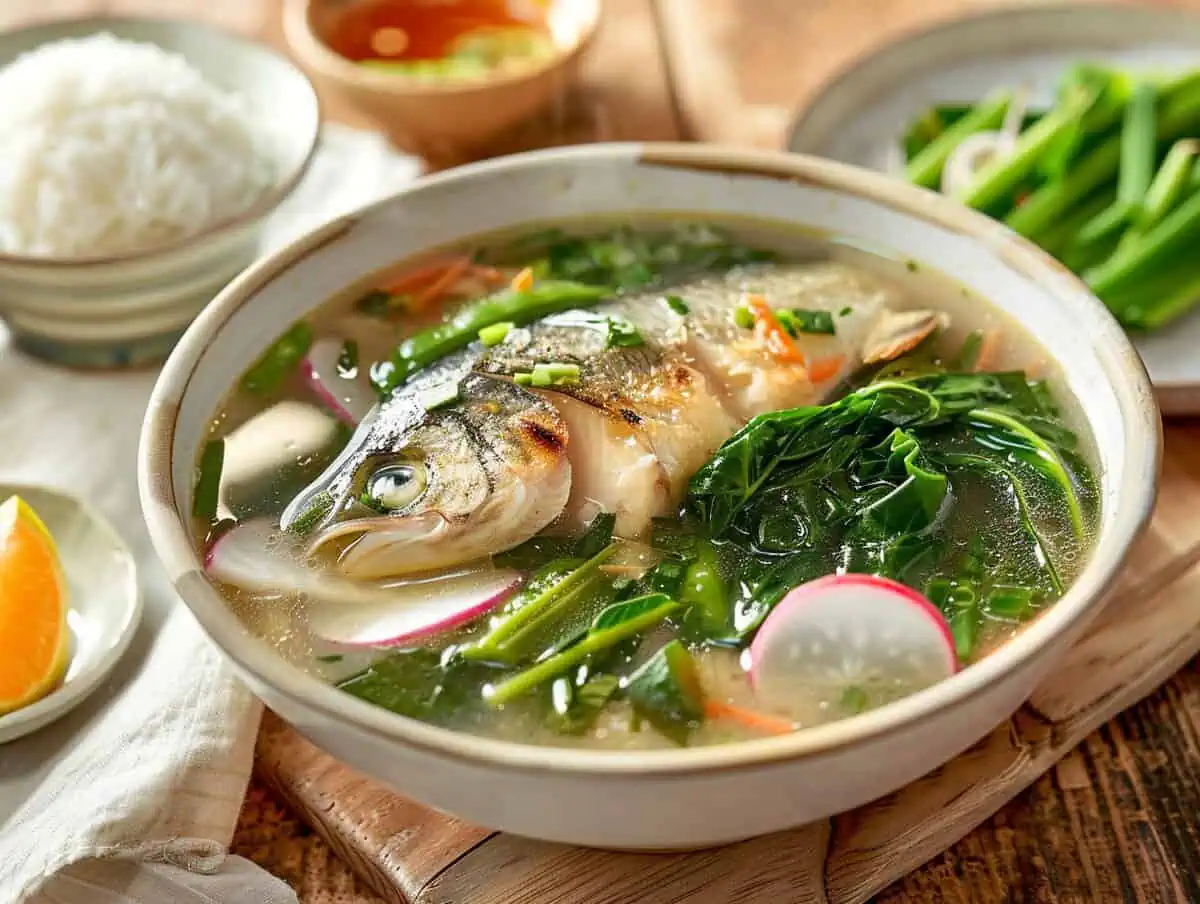
- 4.5 cups water
- 1 pc onion, quartered
- 2 pcs tomatoes, quartered
- 1 pc green finger chili (siling haba)
- 0.5 kg tilapia, cleaned and cut into portions
- 0.5 cup radish, sliced diagonally
- 0.5 cup okra, ends trimmed
- 0.5 cup string beans (sitaw), cut into 2-inch lengths
- 1 package MAGGI® Magic Sinigang Sampalok With Gabi Mix
- 1 cup water spinach (kangkong), separated into leaves and stems
Equipment
- Large pot or deep pan – For simmering the soup
- Knife and cutting board – For preparing vegetables and fish
- Measuring cups – For accurate ingredient portions
- Stirring spoon – Preferably wooden or heat-resistant
- Serving bowl – For presenting the finished dish
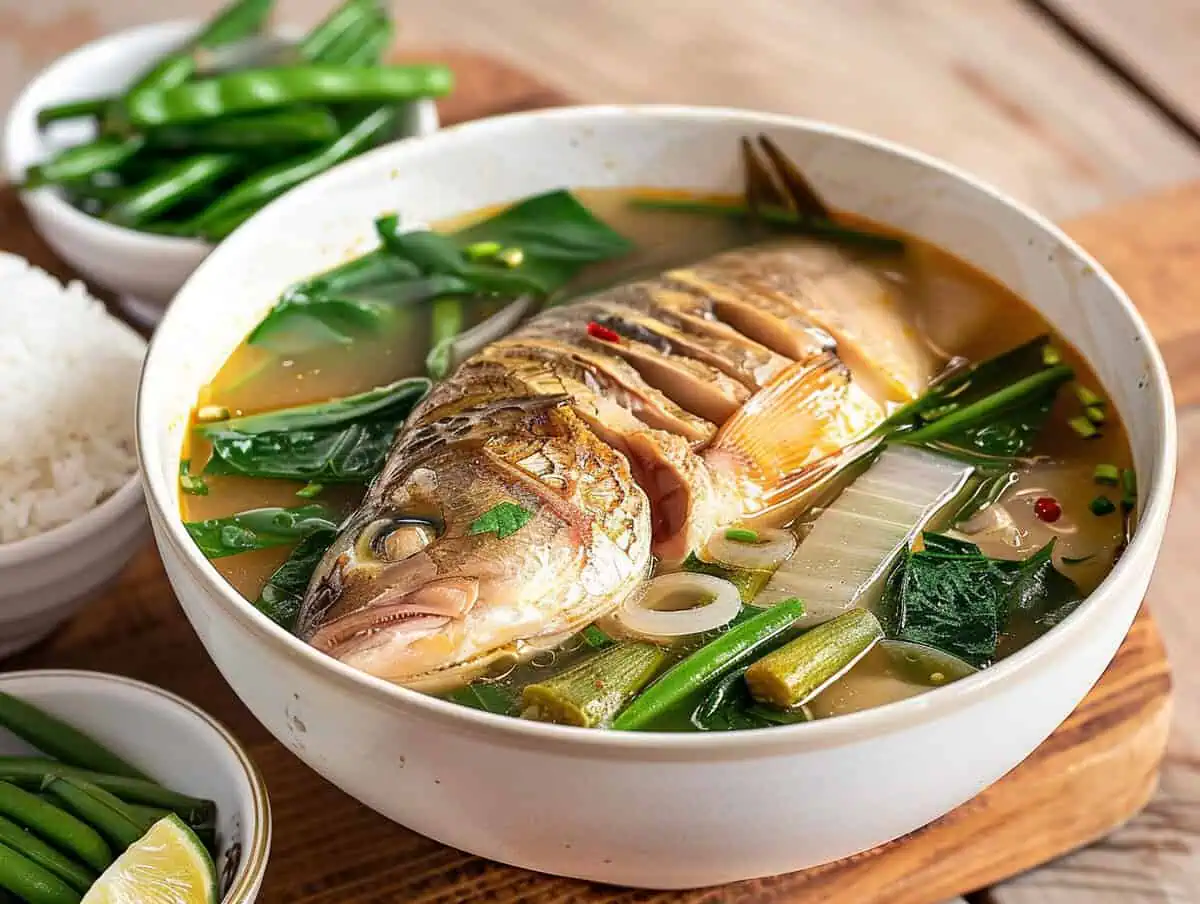
How To Make
- Prepare the broth base: In a large pot, bring 4.5 cups of water to a boil. Add the quartered onion, tomatoes, and finger chili. Lower the heat and simmer for 10 minutes to extract the flavors.
- Cook the fish: Gently add the tilapia pieces to the simmering broth. Cook for 3 minutes until the fish is nearly done. Be careful not to break the fish by stirring too vigorously.
- Add vegetables gradually: Add the vegetables in stages to ensure proper cooking times:
- First, add the radish and simmer for 2 minutes
- Next, add the okra and simmer for another 2 minutes
- Finally, add the string beans (sitaw) and simmer for 2 more minutes
- Finish the dish: Pour in the MAGGI® Magic Sinigang Sampalok With Gabi Mix and stir gently to dissolve. Add the kangkong leaves and stems, stir, and cook for just 1-2 minutes until the greens are wilted.
- Serve: Transfer the sinigang to a large serving bowl. Serve hot with steamed rice on the side.

Tips from Lola's Kitchen
- Fish selection: For the best results, use fresh tilapia. Look for clear eyes, red gills, and firm flesh when selecting your fish.
- Sour balance: Taste the broth before serving. If you prefer a stronger sour flavor, you can add a squeeze of calamansi or lemon juice.
- Vegetable freshness: Add the kangkong at the very last minute to preserve its bright green color and prevent overcooking.
- Fish handling: To keep the tilapia pieces intact, avoid stirring too much after adding the fish. Instead, gently shake the pot occasionally.
- Serving suggestion: Serve with a small dish of fish sauce (patis) with sliced chili on the side for those who prefer extra flavor and heat.
Substitutions
- Fish options: If tilapia isn't available, you can use other firm white fish like milkfish (bangus), sea bass, or snapper.
- Vegetable variations: Feel free to add or substitute vegetables based on what's available. Eggplant, bok choy, or taro stems work well in this recipe.
- Tamarind source: If you don't have the MAGGI® Magic mix, you can use fresh tamarind pulp (about ¼ cup), tamarind paste (2-3 tablespoons), or soaked dried tamarind (¼ cup).
- Gabi substitute: If taro root isn't available, you can use potatoes, though the texture and flavor will be slightly different.
- Kangkong alternative: Spinach or other leafy greens can be used instead of kangkong.
Troubleshooting
- Fish falls apart: Your fish might be overcooked. Add the fish later in the cooking process or reduce the cooking time.
- Broth not sour enough: Add more tamarind mix or a squeeze of calamansi/lemon juice to increase the sourness.
- Vegetables too soft: Add firmer vegetables (radish, gabi) earlier and softer ones (kangkong) at the very end of cooking.
- Too watery: Let the soup simmer uncovered for a few more minutes to reduce and concentrate the flavors.
- Too salty: Add more water or a small peeled and cubed potato to absorb excess salt.
Storage & Reheating
- Refrigeration: Store leftover sinigang in an airtight container in the refrigerator for up to 2 days.
- Freezing: While you can freeze the broth, it's best not to freeze the dish with fish and vegetables as they may become mushy when thawed.
- Reheating: Gently reheat the sinigang on the stovetop over medium-low heat until just warmed through. Avoid boiling vigorously to prevent the fish from breaking apart.
- Revitalizing: When reheating, add a handful of fresh kangkong to brighten up the dish.
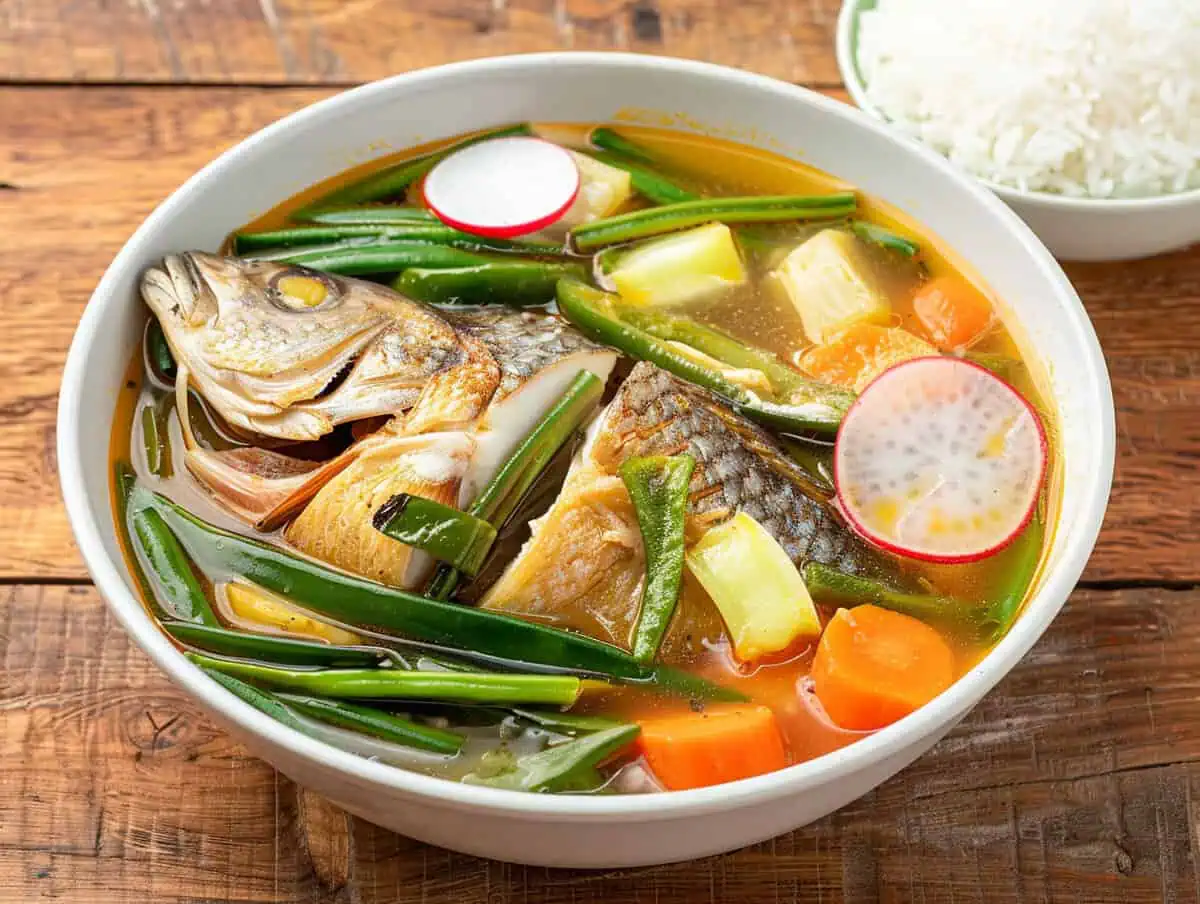
FAQ
Can I make this dish in advance?
You can prepare the broth and vegetables ahead of time, but it's best to add the fish just before serving for the best texture and flavor.
Is sinigang healthy?
Yes! Sinigang is packed with protein from the fish and nutrients from the various vegetables. It's a well-balanced one-pot meal.
Can I make this without the MAGGI® mix?
Absolutely. You can use fresh tamarind or tamarind paste and add salt to taste, though you might need to adjust other seasonings.
Why is my broth cloudy?
This could be from boiling the fish too vigorously. Simmer gently instead of boiling to keep the broth clearer.
Can I add other meats to this sinigang?
While traditional sinigang na tilapia focuses on fish, you can make separate versions with pork, shrimp, or beef following similar cooking methods.
How spicy is this dish?
With just one finger chili, the dish has a mild heat. You can adjust the spice level by adding more chilies or serving them on the side.
Is gabi necessary for this recipe?
The gabi (taro) adds a unique creamy texture and thickens the broth slightly. While not absolutely necessary, it does enhance the traditional flavor profile of the dish.
What makes sinigang different from other Filipino soups?
Sinigang is distinguished by its sour tamarind-based broth, which sets it apart from other Filipino soups like tinola (ginger-based) or nilaga (simple clear broth).
Related
Looking for other recipes like this? Try these:
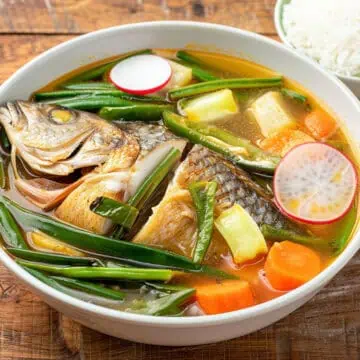
Sinigang na Tilapia with Gabi
Ingredients
- 4.5 cups water
- 1 pc onion quartered
- 2 pcs tomatoes quartered
- 1 pc green finger chili siling haba
- 0.5 kg tilapia cleaned and cut into portions
- 0.5 cup radish sliced diagonally
- 0.5 cup okra ends trimmed
- 0.5 cup string beans sitaw, cut into 2-inch lengths
- 1 package MAGGI® Magic Sinigang Sampalok With Gabi Mix
- 1 cup water spinach kangkong, separated into leaves and stems
Instructions
- Prepare the broth base: In a large pot, bring 4.5 cups of water to a boil. Add the quartered onion, tomatoes, and finger chili. Lower the heat and simmer for 10 minutes to extract the flavors.
- Cook the fish: Gently add the tilapia pieces to the simmering broth. Cook for 3 minutes until the fish is nearly done. Be careful not to break the fish by stirring too vigorously.
- Add vegetables gradually: Add the vegetables in stages to ensure proper cooking times:
- First, add the radish and simmer for 2 minutes
- Next, add the okra and simmer for another 2 minutes
- Finally, add the string beans (sitaw) and simmer for 2 more minutes
- Finish the dish: Pour in the MAGGI® Magic Sinigang Sampalok With Gabi Mix and stir gently to dissolve. Add the kangkong leaves and stems, stir, and cook for just 1-2 minutes until the greens are wilted.
- Serve: Transfer the sinigang to a large serving bowl. Serve hot with steamed rice on the side.
Tips from Lola's Kitchen
- Fish selection: For the best results, use fresh tilapia. Look for clear eyes, red gills, and firm flesh when selecting your fish.
- Sour balance: Taste the broth before serving. If you prefer a stronger sour flavor, you can add a squeeze of calamansi or lemon juice.
- Vegetable freshness: Add the kangkong at the very last minute to preserve its bright green color and prevent overcooking.
- Fish handling: To keep the tilapia pieces intact, avoid stirring too much after adding the fish. Instead, gently shake the pot occasionally.
- Serving suggestion: Serve with a small dish of fish sauce (patis) with sliced chili on the side for those who prefer extra flavor and heat.
The Story Behind Sinigang na Tilapia with Gabi
Sinigang na Tilapia with Gabi tells the story of Filipino cuisine at its most authentic core. This beloved sour soup has deep roots in Philippine culinary history, dating back generations when resourceful cooks combined locally available ingredients to create nourishing, flavorful meals for their families.
The origins of sinigang reflect the agricultural abundance of the Philippines. As an archipelago surrounded by water, fresh fish like tilapia became a natural protein source for many communities. Tilapia, now widely farmed throughout the country, was selected for sinigang because of its mild, sweet flavor that beautifully absorbs the tangy broth without overpowering it.
Gabi (taro root) has been cultivated in the Philippines for centuries and represents the resourcefulness of Filipino cooking. This starchy root vegetable grows abundantly in the tropical climate and adds a unique creaminess to the soup while also serving as a natural thickener. The combination of tilapia and gabi creates a perfect textural balance that has stood the test of time.
The signature sourness of sinigang comes from tamarind (sampalok), a tropical fruit that grows abundantly throughout Southeast Asia. Before commercial mixes became available, Filipino home cooks would painstakingly extract the sour flavor from fresh tamarind, boiling and straining the pulp to create the dish's distinctive tangy broth. This sour profile distinguishes sinigang from other Filipino soups like bulalo or tinola.
Sinigang na Tilapia with Gabi emerged as a practical solution for Filipino families – a one-pot meal that provides complete nutrition with protein, vegetables, and starches all simmered together. It has become especially cherished during the rainy season when the warm, sour broth offers comfort against the cool, damp weather.
Today, this dish continues to be a cornerstone of Filipino home cooking, with recipes passed down through generations. Modern conveniences like the MAGGI® Sinigang mix have made preparation easier, but the soul of the dish remains unchanged – a harmonious blend of sour, savory, and earthy flavors that represents the heart of Filipino culinary tradition.
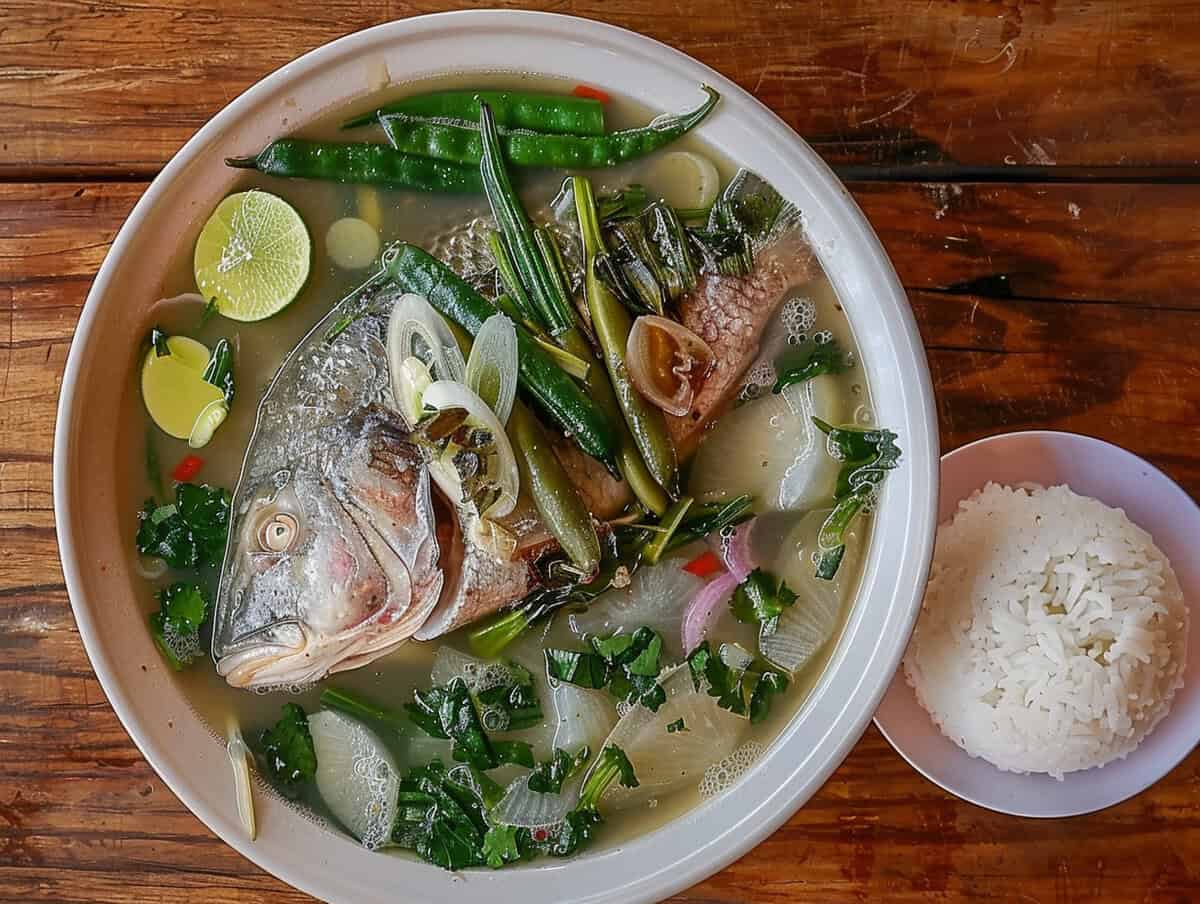








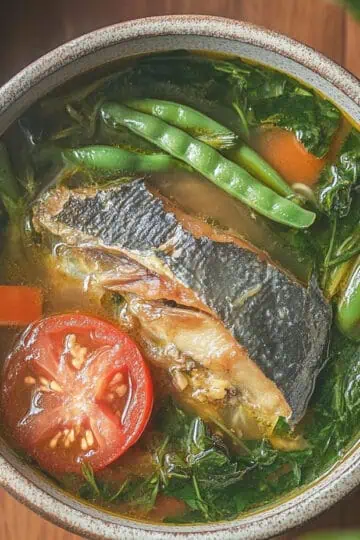
Comments
No Comments